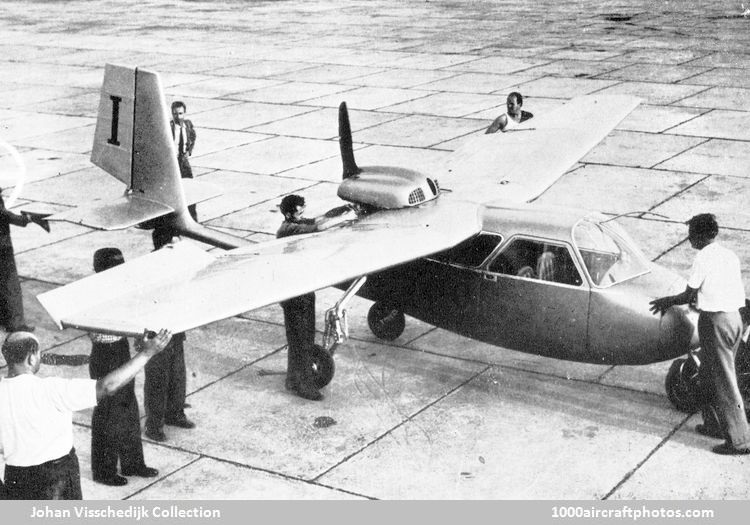Of all-metal construction the PL.5C two-seater was powered by an 85 hp Continental flat-four air-cooled engine driving a pusher propeller. The outer wings folded backwards and with their leading edges upward and anchored to the extremities of the tail plane formed a guard to the pusher propeller which provided the means of ground propulsion. This is shown in this patent drawing from May 1950 (not particularly the PL.5C).
The nose wheel was used for steering. The cabin, which seated two side-by-side, had large doors on each side and was fitted with full instrumentation for both flying and road operations. At the rear end of the cabin structure was mounted, above, the engine and, below, a tubular boom which carried a conventional tail unit. The tricycle landing gear was also carried entirely by the cabin structure.
The prototype was flown in 1949 and after successful initial testing it was registered as I-AUTO. Between Christmas Day 1949 and early January 1950 the PL.5C was taken on a promotional tour of major Italian cities covering 2,485 mls (4,000 km) with only 497 mls (800 km) in the air (the flying was less than planned due to bad weather). Despite modifications to the engine mounting and other parts, the PL.5C gained no orders and eventually the project was abandoned. Reportedly the prototype was scrapped."
